OWC Mercury Electra 3G MAX 960GB Review: 1TB of NAND in 2.5" Form Factor
by Kristian Vättö on October 18, 2012 1:00 AM ESTThe 960GB OWC Mercury Electra MAX
| OWC Mercury Electra MAX 3G (960GB) Specifications | |
| Raw NAND Capacity | 1024GiB |
| Formatted Capacity | 894GiB |
| NAND | Micron 25nm Asynchronous MLC NAND |
| Controller | 2x SandForce SF-2181 |
| RAID Controller | Silicon Image SteelVine Sil5923CNU |
| Sequential Read | 254MB/s |
| Sequential Write | 250MB/s |
| Sequential Read (Incompressible Data) | 252MB/s |
| Sequential Write (Incompressible Data) | 223MB/s |
| Price | $1,118 |
I want to start off by saying that the 960GB Mercury Electra is not meant to be the highest performing SSD on the market. OWC apparently had to go with a SATA 3Gbps interface due to the limited size that a 2.5" form factor offers, which makes especially thermals a tough item to deal with. Price was also a concern as the 960GB Mercury Electra is not cheap to begin with, so sticking with SATA 3Gbps allowed OWC to keep the price a bit more affordable.
Oddly enough, OWC hasn't reported any random read or write numbers for the 960GB Mercury Electra. I asked OWC why and they told me it's because they see audio and video professionals as the biggest niche for the drive, whose usage will mainly consist of big sequential file transfers and hence OWC felt that the random read/write speeds are not important. We'll have our own real-world numbers in a moment either way, but capping all read/writes to ~3Gbps is going to severely limit performance in some scenarios.
Inside the 960GB OWC Mercury Electra MAX
Externally the 960GB Mercury Electra doesn’t differ from its smaller siblings. The only external difference is that when you turn the SSD around, you see a 960GB sticker. I have to say the Mercury Electra feels very rugged and solid. The chassis is made out of fairly thick metal and that gives the impression of good quality.
The internal design of the 960GB Mercury Electra is not something we typically see. Because it’s basically two 480GB SSDs in RAID 0, there are two main PCBs to hold the controllers and NAND. Each PCB consists of a SandForce SF-2181 controller and 16 NAND packages. There are also two smaller PCBs to keep the main ones separate, although the other small PCB is also housing the SATA connector and RAID controller.
The SF-2181
Typically all SandForce SSDs are based on the SF-2281 controller but since the Mercury Electra is a 3Gb/s drive, it makes sense for OWC to go with a cheaper SATA 3Gb/s controller. There are always SandForce's first generation controllers that are all SATA 3Gb/s, but SandForce also has two second generation SATA 3Gb/s controllers: the SF-2141 and SF-2181. The difference between the two is that SF-2141 is a 4-channel design and its maximum capacity is limited to 64GB. I've only seen it used in some very low-end SandForce SSDs (e.g. ADATA Premier SP800), which is its target market. The SF-2181 has 8 channels like most SSD controllers the only difference between it and SF-2281 is the interface, which limits the sequential read/write speeds of SF-2181 to 250MB/s. SandForce has not released any pricing information but it should be safe to say that the SF-2181 is cheaper than SF-2281. Like all semiconductors, not every die is equal, which means SandForce can brand the lower binned parts as SF-2181 and sell the higher binned parts as SF-2281.
The RAID Controller
The RAID controller is partially hidden under one of the main PCBs but OWC told us that it's Silicon Image's SteelVine Sil592 (you can actually see the logo in the picture above). Physically it's very small and the whole package measures in at only 36mm^2.
The Sil5923 isn't a very complex controller and only supports RAID 0, RAID 1 and JBOD. It's also limited to the SATA 2.6 spec (3Gbps) and at least Silicon Image does not have a controller with SATA 6Gbps support right now. The market for SATA to SATA RAID controllers is much smaller compared to PCIe to SATA controllers, which is why I'm not surprised that Silicon Image's solution is only SATA 3Gbps.
The NAND
Micron has been reforming their part numbering system. Instead of a long part number, there are now two five character codes. The lower code is what Micron calls FBGA code and it corresponds to the former part number. Obviously there is the downside of using such a system because the FBGA code doesn’t provide anywhere near as much information as the old part number did. Fortunately, Micron has a public FBGA code decoder which will decode the FBGA code and match it to a corresponding part number.
In this case, NQ392 is the same as MT29F256G08CMCABH2-10R:A. From that we get all the information we need: each package is 32GB in size (4x 8GB 25nm dies) and the NAND is running in asynchronous mode.
Test System
| CPU |
Intel Core i5-2500K running at 3.3GHz (Turbo and EIST enabled) |
| Motherboard |
AsRock Z68 Pro3 |
| Chipset |
Intel Z68 |
| Chipset Drivers |
Intel 9.1.1.1015 + Intel RST 10.2 |
| Memory | G.Skill RipjawsX DDR3-1600 2 x 4GB (9-9-9-24) |
| Video Card |
XFX AMD Radeon HD 6850 XXX (800MHz core clock; 4.2GHz GDDR5 effective) |
| Video Drivers | AMD Catalyst 10.1 |
| Desktop Resolution | 1920 x 1080 |
| OS | Windows 7 x64 |


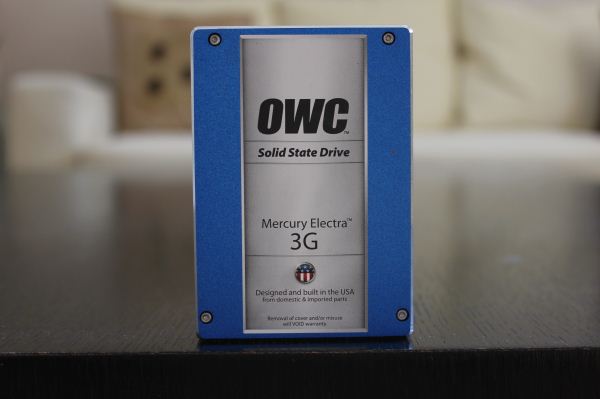
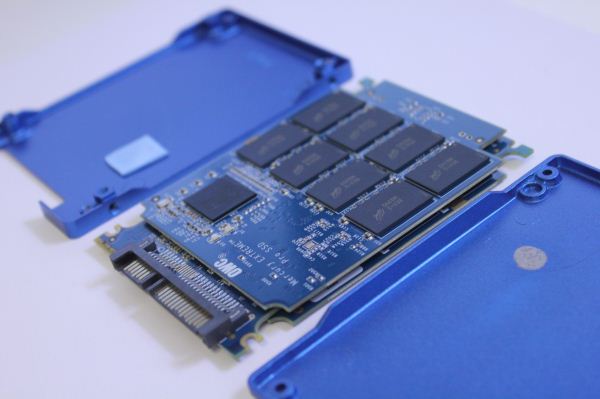
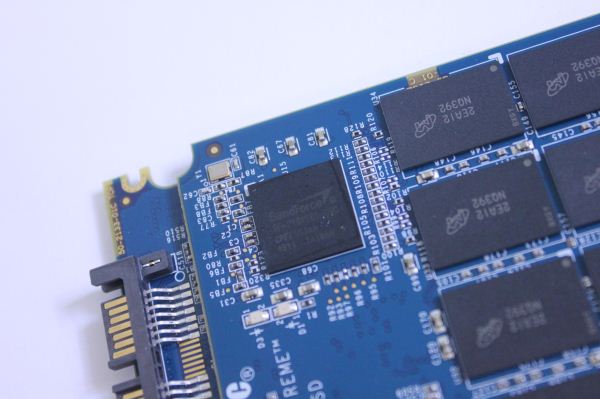
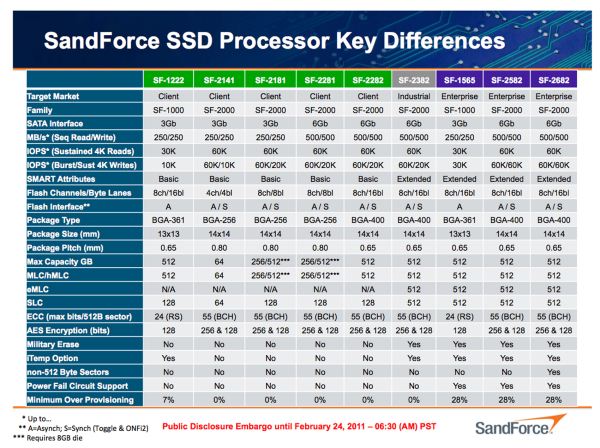
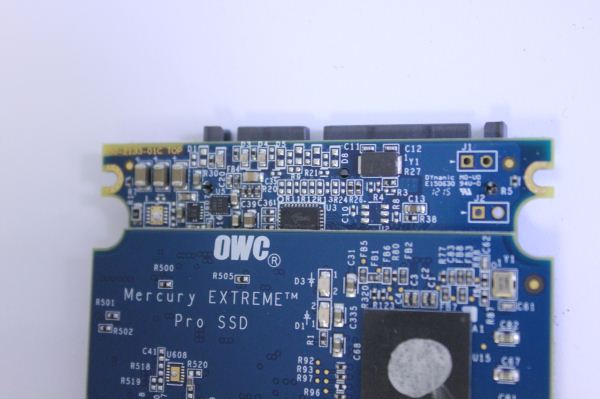
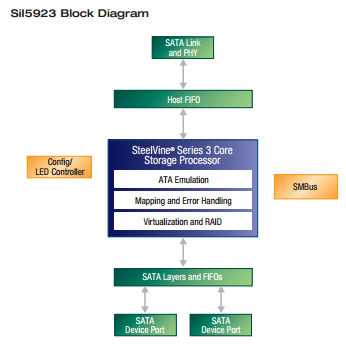
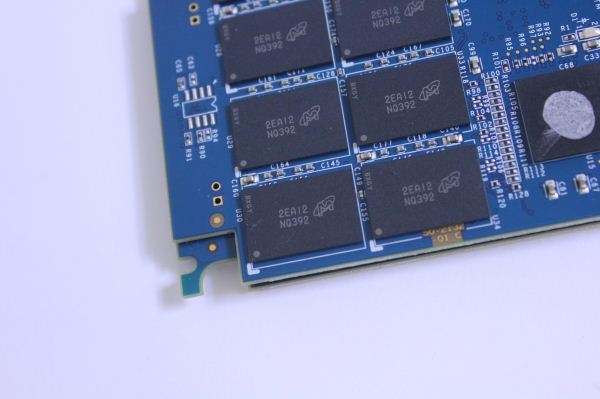








36 Comments
View All Comments
kmmatney - Thursday, October 18, 2012 - link
For most users, the "Light Workload" benchmark is probably the best indicator of real life performance, and here it performs close to a Crucial M4 running at 3Gbps. So not completely terrible (will feel much faster than any hard drive) but you really need to be using a 6Gbps controller to be competitive nowadays.ForeverAlone - Thursday, October 18, 2012 - link
Bloody hell, they're fast!To everyone who is moaning about £/GB or SSD storage, you are idiots for even considering using an SSD for storage.
HKZ - Thursday, October 18, 2012 - link
Maybe for big projects and similar things it's pretty dumb for a regular user, but with games about 10GB or so even on a 256GB SSD you can stuff a lot of games on there!HKZ - Thursday, October 18, 2012 - link
I have an OWC 240GB SSD SATA 3, and it's pretty fast, but at 1TB of space at this price this performance is dismal. I'm saving up for a Samsung 830 (maybe an 840) for the extra space and speed. I only use about 60GB of that 240 for OS X, and the rest for Windows 7. With a 512GB I'd have all kinds of space for my games. Yes, I game on a MacBook and I know it's not the best but it's all I've got right now. Don't kill me in the comments! XDI've got that SSD and a 1TB HDD taking the optical drive spot in my 2011 MBP and there's no way I'd pay a third of the price of my already very expensive machine for an SSD that slow. Someone will buy it, but I can't wait for an affordable 1TB SSD.
Lord 666 - Thursday, October 18, 2012 - link
Think as an iSCSI target for VSA or DAS using an older but still relevant HP DL380 G6 or G7. The 3g connection will be fine and overall performance will be much faster than 1tb SATA not to mention much cheaper than 1tb SAS.JarredWalton - Thursday, October 18, 2012 - link
But will it be reliable long-term? That's someone no one really knows without extended testing in just such a scenario.poccsx - Thursday, October 18, 2012 - link
Not a criticism, just curious, why is the Samsung 840 not in the benchmarks?Kristian Vättö - Friday, October 19, 2012 - link
I made the graphs before we had the 840, that's why (but then this got pushed back due to the 840/Pro reviews). You can always use Bench to compare any SSD to anotherciparis - Friday, October 19, 2012 - link
- it's not affordable- it's not remotely efficient
- it's quite slow
This seems like a company out of it's depth, producing a product it should have cancelled outright when the numbers became clear (it's no wonder they don't want to talk about them). Note that I'm giving them the benefit of the doubt and assuming these numbers weren't what they set out to create; if I'm wrong about that it's perhaps even more damning.
melgross - Friday, October 19, 2012 - link
You shouldn't assume, because you don't know. I wouldn't be surprised if there is a fair amount of demand for this in a laptop despite the price, performance or power draw. Some laptops have a pretty good battery life around 7 hours or so that would still have decent battery life with one of these.OWC is right that this is a good job for video editing on a laptop, and professional use for dailies in the field would be a perfect use for this.
As far as criticism of the performance goes, I remember plenty of guys here talking about how they were going to buy drives a year or two ago that had performance that was much worse for much smaller drives at a higher price per Gb. If you're loading or saving fairly large projects, a doubling of performance is very significant.
Of course, if you never have done any of that, you won't understand it either.